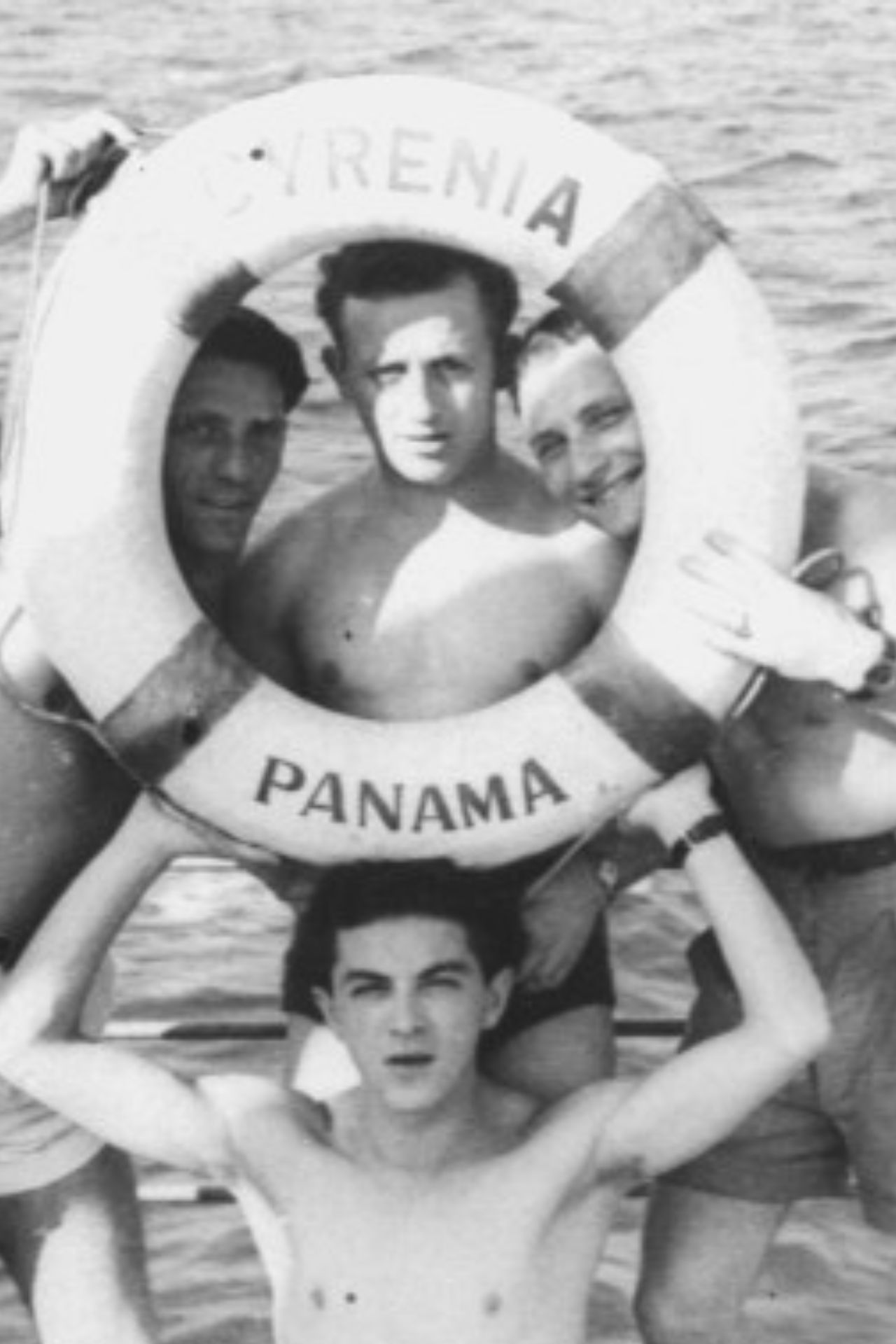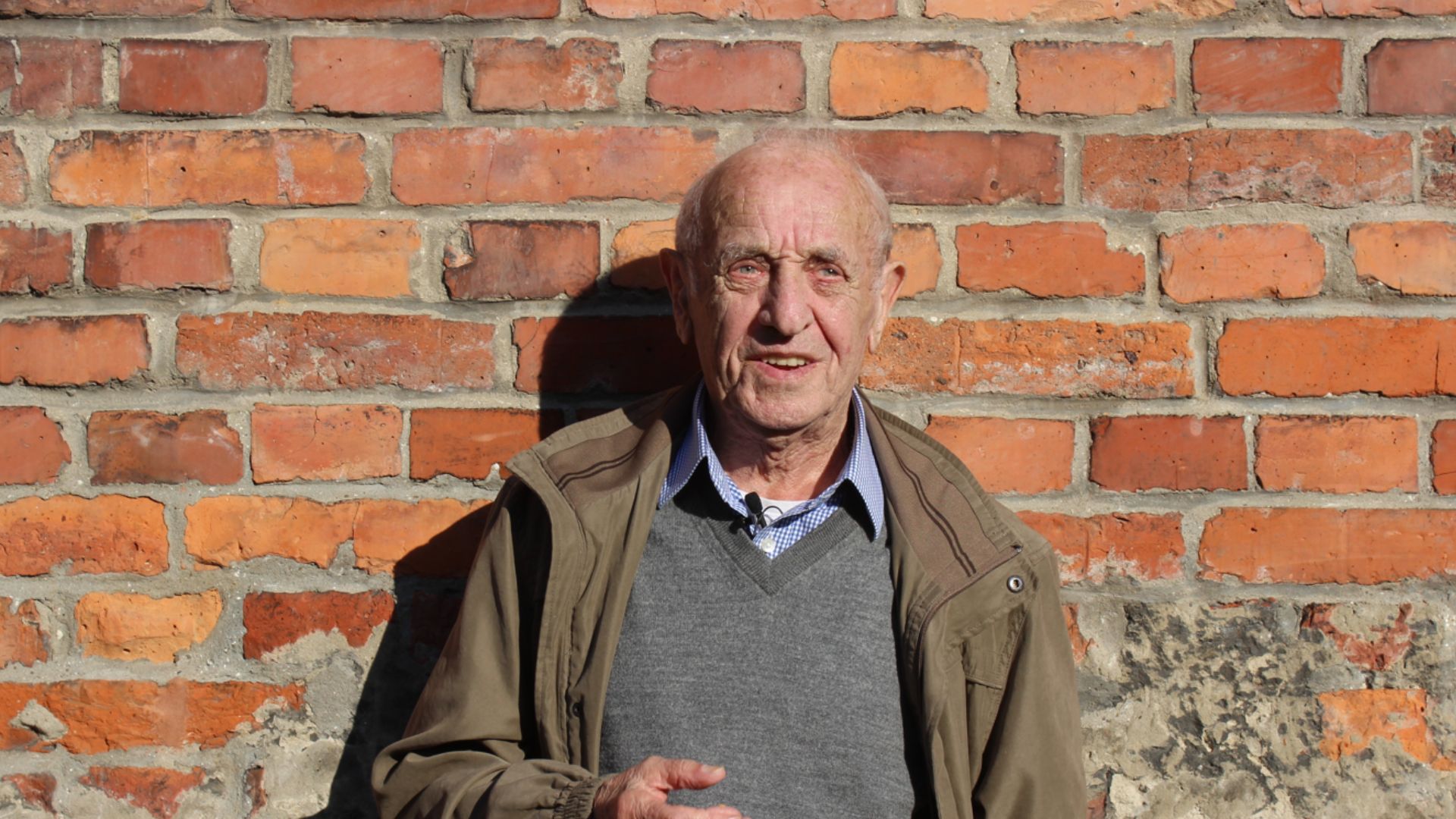In 1941 a German soldier died in an accident in Wielun. The Germans accused the Jews of murder and ordered the Jewish Council to select ten people to hang, including John’s great uncle.
A Jewish policeman and an SS officer came to John’s house and ordered John’s father to hang the Jews, which he refused. The SS officer hit him with his gun. “Why can’t you do it?” the German asked, and John’s father answered, “Because I cannot hang my own uncle.” When John’s father continued to refuse, the SS officer shot him in the head.
This happened in front of Rajzla, 12-year-old John and two of his younger siblings. John took his father to the cemetery and dug a grave in the frozen soil. After they had buried their father, they came home and cried. Their mother stayed strong and told them that they had to get on with life.
John was caught in a round-up one day and transported to a labour camp in Poznan where he had to build roads. It was extremely hard work and there was never enough food.
One day a German foreman asked John to buy him some chocolate and cigarettes at the train station. While he was there he saw a train loaded with piles of wood leaving the station. In a split second, he made a dash and jumped on the train.
The train stopped in Kalisz, a town in central Poland. John walked around, not knowing what to do. Eventually, he knocked on a church door and begged the priest for help. The priest took him in.
Around six months later, in April 1943, another priest arrived. John overheard the new priest saying to the host, “I believe you are keeping Jewish people here. This is dangerous. If you are caught you will be shot.” John was afraid the priest might denounce him. At 3:00 the next morning he took a rucksack, stole a pushbike and left.
John went back to his hometown, but found his house empty. The neighbours were horrified to see him. When John asked whether he could stay with them, they turned him down.
The neighbours had told him that his mother had been sent to Lodz, so he decided to go there.
Whilst walking around Lodz, John could not see any Jews. Eventually he dared to ask a Pole where all the Jews were. The Pole directed him to the ghetto, where he needed to convince one of the guards that he was Jewish, just to be let in.
As soon as he was in the ghetto and heard his language, he felt relieved. He was soon reunited with his sister Fella. He stayed with her and found a job sweeping the square where the food was delivered. John worked there for about six months until mid-1944 when the Germans started to foreman told me to go with my sister into hiding. I understood that this ‘evacuation to the east’ was all Nazi propaganda, but my sister believed it and so we went on the transport.”
John and Fella were sent to Auschwitz-Birkenau. On arrival, they were separated. A prisoner started to talk to John, “I know you. I went to school with your brother Abram. I’ll help you. When asked how old you are, say 17.” John, 15 at the time, said he was 17, and survived the selection. John was tattooed with the number B7584 on his arm.
After a few weeks in the camp, John ended up in the farm building of Auschwitz. He became the essenskutscher, the person to deliver milk in the morning for the SS officers, and the bread and soup for the prisoners in the camp. John had a cart and two horses to deliver the food. He slept with the horses, had warm civilian clothes and had enough to eat.
At the end of 1944 the Russians were approaching from the east, and John was sent on a death march away from the camp. They walked for five or six days, and many people died on the way. In Breslau, they were pushed onto open coal trains. When the train finally arrived at Buchenwald concentration camp in Germany, more than half of the people on the transport had died.
John was put into Block 66, the children’s block, with over 800 Jewish boys. They had to work in nearby Weimar, clearing the rubble caused by the American bombs that had fallen on the town. The bomb attacks gave them some hope that the end of the war was near.





